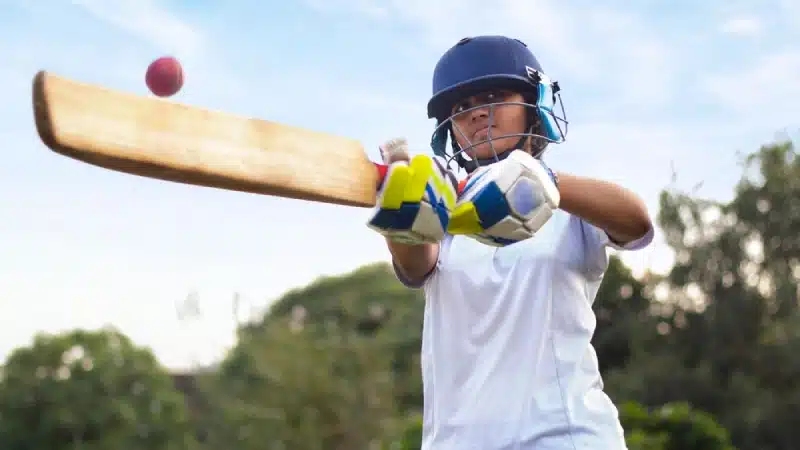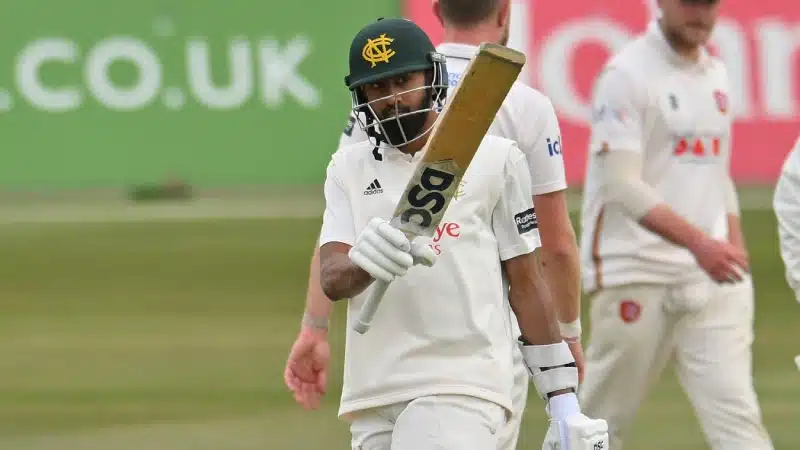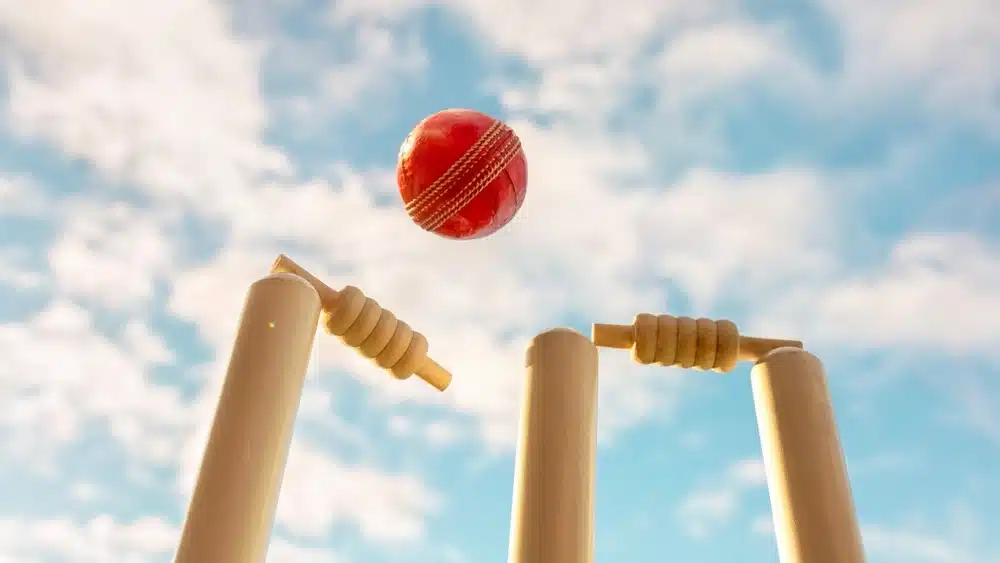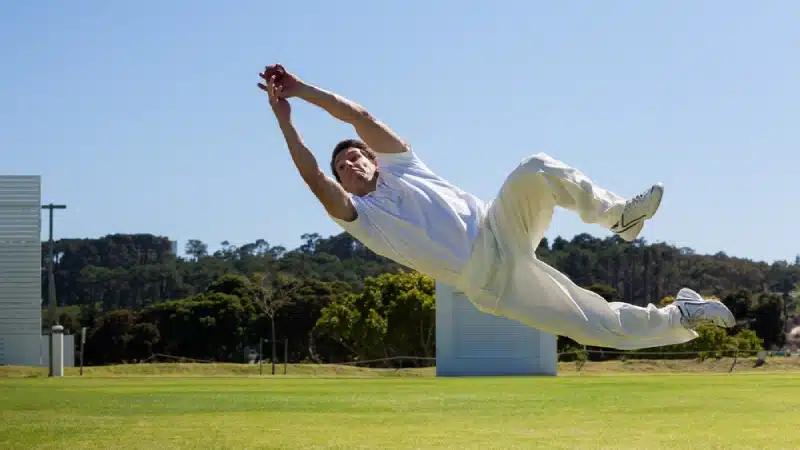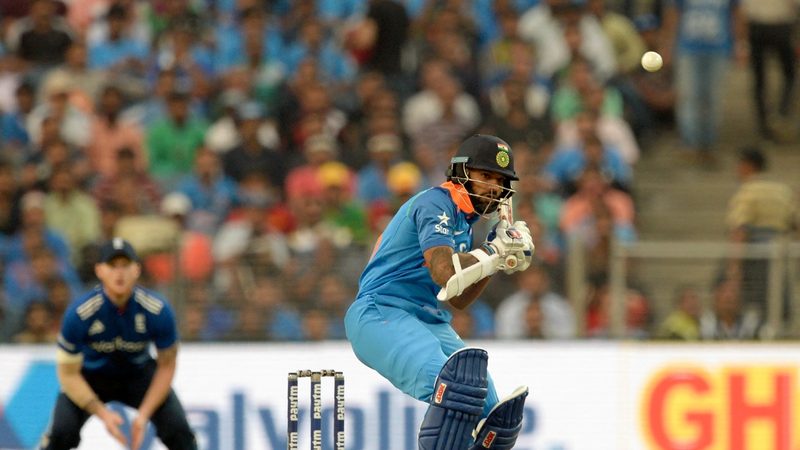
Extras also termed as sundries are runs awarded to the batting side that are part of the team total but not credited in the batters’ score.
No balls, wides, byes, leg byes and penalties are the five types of extras in cricket. Amongst all, No ball is the only extra which has multiple variants.
Below we look at various No ball rules and types of No balls in cricket.
No ball rules in cricket
A No ball in cricket is an illegitimate delivery bowled by the bowler resulting in an extra run awarded to the batting team as well as a free hit in the limited-over formats.
The No ball delivery is not counted towards the bowlers’ six legal deliveries to complete an over.
In One-Day and T20 cricket, a No ball is followed by a free hit.
Earlier, the free hit was awarded to the batting side for only the front-foot no balls but the 2015 amendment of playing conditions approved by the International Cricket Council (ICC) declared free hits for all the types of No balls in one day and T20 cricket.
Irrespective of the type of No ball, free hits mean that a batter cannot be declared out on deliveries following the No ball unless there’s a run-out, stumping or the batter obstructs the field or hits the ball twice. The same is applicable for a free hit in one day and T20 cricket.
How many types of No balls in cricket?
There are 15 types of No balls in cricket. There are multiple ways by which a fielding team can be judged to have bowled a No ball apart from the bowler stepping over the popping crease.
Let's look at all the types of No balls in cricket.
Front foot No ball
The umpire signals a front foot No ball when no part of the bowler’s foot is behind the popping crease. A popping crease is a line approximately four feet parallel from the stumps.
For the delivery to be deemed legal, the bowler must have some part of the foot behind the popping crease at the point of landing while delivering a ball. If the bowler’s foot slides ahead of the crease after landing, the ball is still termed as a legal delivery provided some part of it was behind the popping crease at the time of landing.
Back foot No ball
The umpire signals a backfoot No ball when the trailing foot of the bowler cuts the return crease at the time of releasing the ball. The return crease refers to the two lines on either side of the wicket. They are at right angles to the bowling and popping crease, marking out the designated area where a bowler must deliver the ball.
As per Law 21.5 of the Marylebone Cricket Club (MCC), the guardians of cricket laws, ‘The bowler's back foot must land within and not touch the return crease appertaining to his/her stated mode of delivery. - behind the popping crease. If the bowler's end umpire is not satisfied that all of these three conditions have been met, he/she shall call and signal No ball.’
Waist height No ball
The umpire declares a No ball for height if a bowler bowls a full toss above the waist of the batter.
As per ICC’s match clause 41 for unfair play, if a bowler bowls two waist-high full tosses (beamers) in a match, the umpire has the right to debar the bowler from bowling any further if he feels the non-pitching deliveries are dangerous with a potential risk of injury to the batter at the striker’s end.
No ball for ball bouncing over the head
As per MCC’s Law 21.10 for No balls, the umpire has the right to signal a No ball if the ball bowled by a bowler passes over or would have passed over the head of the striker while standing upright in the popping crease.
Furthermore, under law 41.6 and 41.7, the on-field umpire can declare a No ball if he feels the bowler is continuously deemed to bowl dangerous and unfair short-pitched deliveries.
The delivery can be considered illegitimate and as a result, the opposing team is granted an extra run and a free hit.
No ball for ball bouncing multiple times
As per Law 21.7 of the MCC, a delivery will be declared as a No ball if it bounces more than once before reaching the batter at the popping crease or if the ball rolls through the surface prior to reaching the batter.
No ball for delivery pitching outside the playing area
If a bowler bowls a delivery that pitches outside the playing area or the cut strip, (line parallel to the wide line) either partially or completely before reaching the striker, the umpire can declare the delivery as a No ball.
No ball for bowler breaking wickets while delivering the ball
If a bowler delivers a ball and the non-striker is not dismissed - non-striker leaving the crease - then the umpire can declare the delivery as a No ball if the bowler breaks the wickets at the non-striker’s end after the ball comes into play and before completion of the delivery stride. This also includes any clothing or an object that falls onto the stumps and breaks the wickets during the delivery stride.
Earlier before 2013, the ball was declared dead if stumps at the non-striker’s end were broken in the bowler’s delivery stride. However, the change in law was initiated in 2013 after England fast bowler Steven Finn repeatedly broke the stumps in the Headingley Test against South Africa in 2012.
No ball for ball throwing (chucking)
In cricket, chucking is an illegal type of bowling action when a bowler straightens the bowling arm beyond the permissible limit.
As per the law, the bowlers are allowed a minimum elbow/arm extension of up to 15 degrees and the failure to comply to the same will result in no balls.
No ball for delivering underarm
As per Law 21.1.2, a ball delivered underarm by a bowler will be signalled a no-ball except for special agreement.
Lob bowling or underarm bowling has been considered illegal after the infamous 1981 World Series match where Trevor Chappell bowled an underarm ball for Australia to beat the Kiwis with New Zealand requiring six off the final ball of the match.
No ball for throwing the ball towards striker before delivery
If a bowler throws the ball towards the striker before his delivery stride, the umpire shall declare the delivery as a No ball.
No ball for failure to notify umpires the mode of delivery
As per law 21.1.1 of the MCC, a bowler must inform the umpire about whether he intends to bowl right-handed or left-handed, pace or spin and over or round the wicket before bowling. Failing which, the umpire can signal a No ball.
No ball for fielder intercepting the delivery
If a ball delivered by the bowler touches any fielder before making contact with the striker, his bat or it passes above his stumps, the umpire can deem the delivery as a No ball and immediately signal it as a dead ball.
No ball for breaching the number of fielders on the on side
According to Law 28.4 of the MCC, no more than two fielders - excluding wicket-keeper - should be positioned behind square leg by a fielding team. In case of infringement of the above law, the umpire shall declare the delivery as a No ball.
No ball for delivery coming to rest before reaching the striker
According to Law 21.8, a ball shall be declared as a No ball if it comes to rest in front of the striker without touching him or his bat after the bowler has delivered it.
No ball if wicket-keeper is in front of the stumps
A wicket-keeper is expected to remain wholly behind the stumps at the striker’s end from the time the ball comes into play.
As per Law 27.3.1, an umpire can signal a No ball if the wicket-keeper collects the ball in front of the stumps or in line with the stumps before the ball touches the batter or the body of the batter.
In case batters attempt a run, then the wicket-keeper is allowed to collect the ball in front of the stumps.
Author: Kaustubh Potdar
Featured photo: Punit Paranjpe / AFP












